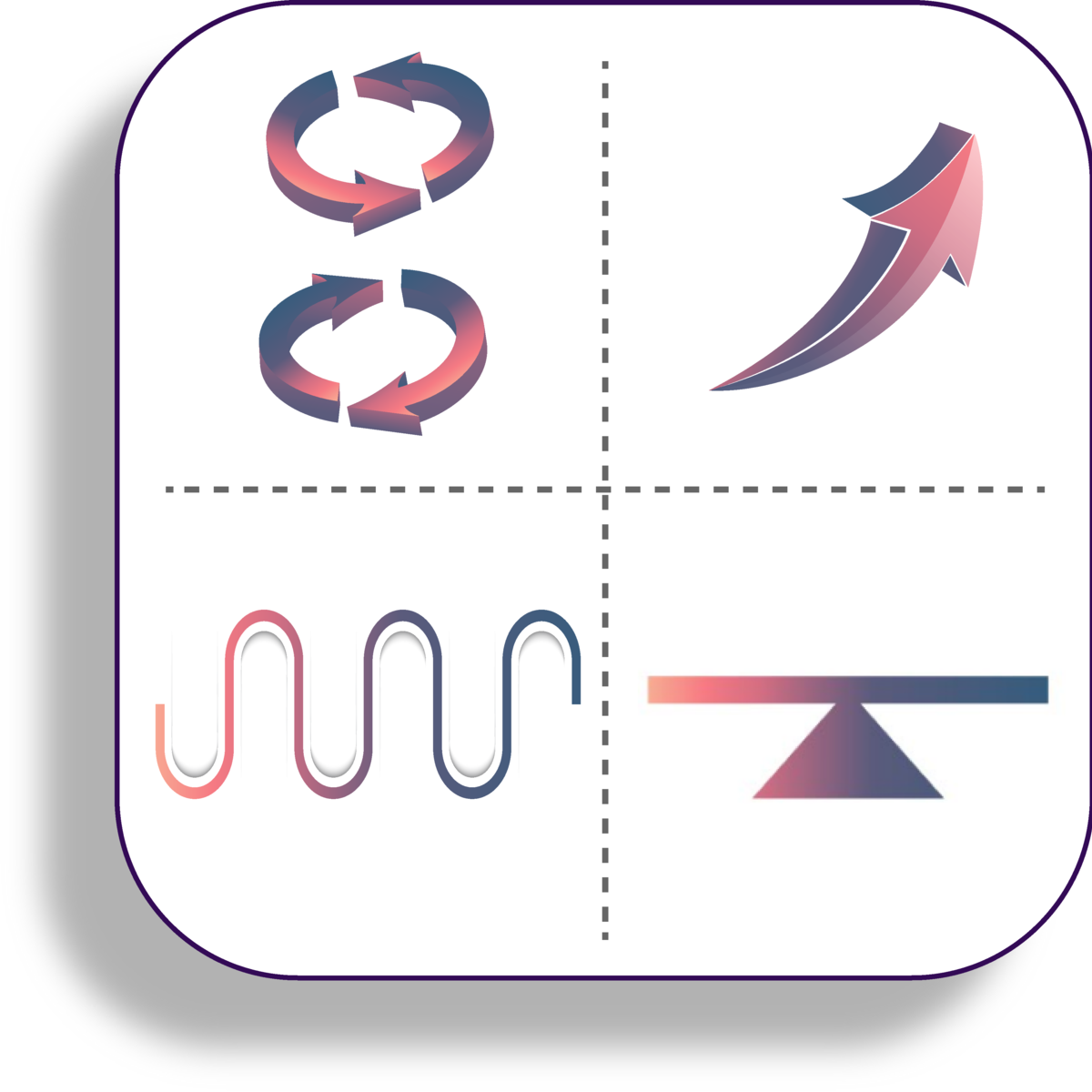Back to Courses









Economics Courses - Page 4
Showing results 31-40 of 99
Model Thinking
We live in a complex world with diverse people, firms, and governments whose behaviors aggregate to produce novel, unexpected phenomena. We see political uprisings, market crashes, and a never ending array of social trends. How do we make sense of it? Models. Evidence shows that people who think with models consistently outperform those who don't. And, moreover people who think with lots of models outperform people who use only one. Why do models make us better thinkers? Models help us to better organize information - to make sense of that fire hose or hairball of data (choose your metaphor) available on the Internet. Models improve our abilities to make accurate forecasts. They help us make better decisions and adopt more effective strategies. They even can improve our ability to design institutions and procedures. In this class, I present a starter kit of models: I start with models of tipping points. I move on to cover models explain the wisdom of crowds, models that show why some countries are rich and some are poor, and models that help unpack the strategic decisions of firm and politicians.
The models covered in this class provide a foundation for future social science classes, whether they be in economics, political science, business, or sociology. Mastering this material will give you a huge leg up in advanced courses. They also help you in life. Here's how the course will work. For each model, I present a short, easily digestible overview lecture. Then, I'll dig deeper. I'll go into the technical details of the model. Those technical lectures won't require calculus but be prepared for some algebra. For all the lectures, I'll offer some questions and we'll have quizzes and even a final exam. If you decide to do the deep dive, and take all the quizzes and the exam, you'll receive a Course Certificate. If you just decide to follow along for the introductory lectures to gain some exposure that's fine too. It's all free. And it's all here to help make you a better thinker!

Advanced Trading Algorithms
This course will provide back test results for all the strategies in developed and emerging markets. The learner will also be taught scientific ways of back testing without succumbing to either look ahead (or) survival bias.
You will learn various methods of building a robust back testing system for the strategies discussed in the previous course. You will be taught how to differentiate between mere data mining and results based on solid empirical or theoretical foundation. Next, you will learn the ways and means of back testing the results and subjecting the back test results to stress tests. After which, you will learn the various ways in which transaction costs and other frictions could be incorporated in the back testing algorithm. Finally, you will learn techniques for measuring a strategies' performance and the concept of risk adjusted return. You will use some of the famous measures for risk adjusted returns such as Sharpe ratio, Treynor's Ratio and Jenson's Alpha. You will see how to pick an appropriate benchmark for a proposed fund.

Topics in Applied Econometrics
In this course, you will discover models and approaches that are designed to deal with challenges raised by the empirical econometric modelling and particular types of data. You will:
– Explore the motivations of each approach by means of graphs, preliminary statistics and presentation of economic theories
– Discuss the problem of identification of the parameters, and how to address this problem by modelling simultaneous equations and causality in economics.
– Examine the key features of panel data, and highlight the advantages and disadvantages of working with panel data rather than other structures of data.
– Learn how to choose what econometric specification to adopt by introducing the test for poolability and the Hausman tests.
– Discuss models for probability that are used where the variable under investigation is qualitative, and needs to be treated with a different approach.
– Learn how to apply this approach to building an Early Warning system to forecast systemic banking crises using data from the World Bank.
It is recommended that you have completed and understood the previous two courses in this Specialisation: The Classical Linear Regression Model and Hypothesis Testing in Econometrics.
By the end of this course, you will be able to:
– Respond appropriately to issues raised by some feature of the data
– Resolve address problems raised by identification and causality
– Resolve problems raised by simultaneous equation and instrumental variables models
– Resolve problems raised by longitudinal data
– Resolve problems raised by probability models
– Manipulate and plot the different types of data.

Measurement – Turning Concepts into Data
This course provides a framework for how analysts can create and evaluate quantitative measures. Consider the many tricky concepts that are often of interest to analysts, such as health, educational attainment and trust in government. This course will explore various approaches for quantifying these concepts. The course begins with an overview of the different levels of measurement and ways to transform variables. We’ll then discuss how to construct and build a measurement model. We’ll next examine surveys, as they are one of the most frequently used measurement tools. As part of this discussion, we’ll cover survey sampling, design and evaluation. Lastly, we’ll consider different ways to judge the quality of a measure, such as by its level of reliability or validity. By the end of this course, you should be able to develop and critically assess measures for concepts worth study. After all, a good analysis is built on good measures.

Cultural impact of housing displacement gentrification
This course provides an introduction to gentrification and to the cultural impacts of housing displacement for people in cities and neighbourhoods across the world. Gentrification is a term which has been used to describe the process by which wealthier people move into an area leading to the displacement of poorer groups who are priced out of the area by increases in rents and housing prices. It is usually associated with physical improvements to the housing stock and to changes in local shops and services. Sometimes it is closely associated with the displacement of black people by white people. Gentrification is never neutral in its effects. Places change. They look and feel different and different people live there.
There are winners and losers, incomers and those displaced, all of whom are caught up in a process by which the social status of an area can often change beyond recognition. Gentrification is both a social and a spatial process. It is not surprising therefore to find that most people who have written about gentrification are either sociologists or geographers.
In this course we will learn how the term gentrification originated and the way in which the term has developed since its first sighting in the 1960s. We will consider different theoretical explanations for processes of change and ask questions about who wins and loses. After acquiring theoretical and conceptual skills we will apply these to a series of international case studies to understand what gentrification might look like and feel like in different places. What changes? How do you measure change? What happens to the people displaced- where do they go to? Who are the newcomers? This course will give you insights which will help you better understand neighbourhood level changes; inspire you to learn more about the interaction of social and spatial changes and to think critically about the future of neighbourhoods with which you are familiar.

What are the Chances? Probability and Uncertainty in Statistics
This course focuses on how analysts can measure and describe the confidence they have in their findings. The course begins with an overview of the key probability rules and concepts that govern the calculation of uncertainty measures. We’ll then apply these ideas to variables (which are the building blocks of statistics) and their associated probability distributions. The second half of the course will delve into the computation and interpretation of uncertainty. We’ll discuss how to conduct a hypothesis test using both test statistics and confidence intervals. Finally, we’ll consider the role of hypothesis testing in a regression context, including what we can and cannot learn from the statistical significance of a coefficient. By the end of the course, you should be able to discuss statistical findings in probabilistic terms and interpret the uncertainty of a particular estimate.

China’s Economic Transformation Part 1: Economic Reform and Growth in China
In 1978, after nearly 30 years of socialist planning under Mao Zedong, China was one of the world’s poorest countries, saddled with an inefficient, inward-looking economy. Today, China is an upper-middle income country and the world’s largest trading nation, contributing more to global economic growth than any other nation. How could such a remarkable transformation take place?
This course will examine in detail the reforms that have contributed to China’s economic development and the current challenges facing the Chinese economy. After completing this course, you will be able to:
- describe the origin and consequences of China’s key economic reforms since 1978;
- explain how features of China’s fiscal and financial systems have impacted development outcomes;
- assess the extent to which China has integrated itself into the global economy and the consequences of such integration for China and other countries;
- explain the importance of different sources of economic growth during different periods since 1978; and
- critically assess the economic and policy challenges facing China going forward.
This course does not offer certificate at the moment.
Course Overview video: https://youtu.be/YBkhpvWUoIw

Welcome to Game Theory
This course provides a brief introduction to game theory. Our main goal is to understand the basic ideas behind the key concepts in game theory, such as equilibrium, rationality, and cooperation. The course uses very little mathematics, and it is ideal for those who are looking for a conceptual introduction to game theory.
Business competition, political campaigns, the struggle for existence by animals and plants, and so on, can all be regarded as a kind of “game,” in which individuals try to do their best against others. Game theory provides a general framework to describe and analyze how individuals behave in such “strategic” situations.
This course focuses on the key concepts in game theory, and attempts to outline the informal basic ideas that are often hidden behind mathematical definitions. Game theory has been applied to a number of disciplines, including economics, political science, psychology, sociology, biology, and computer science. Therefore, a warm welcome is extended to audiences from all fields who are interested in what game theory is all about.

The Global Financial Crisis
Former U.S. Secretary of the Treasury Timothy F. Geithner and Professor Andrew Metrick survey the causes, events, policy responses, and aftermath of the recent global financial crisis.

Introduction to Economic Theories
Wondering why economists have not predicted serious financial crises? Shocked by economic assumptions of human behavior as self-centered and focusing only on what can be measured? Asking yourself if there are no sensible economic alternatives to free markets? Then you are at the right place to learn economics!
This is the first online course that teaches economics from a pluralist perspective. Economic pluralism means that a plurality of theoretical and methodological viewpoints is regarded as valuable in itself and is simply the best way in which economics can make progress in understanding the world. This MOOC will illustrate economic pluralism not only in substance but also in form. You will see not only me, a Professor of Economics, but also a pop-up Prof of our business school, who illustrates the actor perspective of firms, government and civil society. And you will meet an online student, based in Greece, who will help you through the tutorial videos in which I will explain key concepts, tools and techniques.
I will not limit myself to the dominant theory, as almost every other course does. Instead, I will introduce you to four very different economic theories for the whole set of standard topics in microeconomics and macroeconomics. The theories are presented every time from broad and more interdisciplinary to narrow and more mathematical. The four theories that I like to introduce you to are Social Economics, Institutional Economics, Post Keynesian economics and, at the very end of each topic, Neoclassical Economics, for the special case of ideally functioning markets. But not everything is different in this course. Like every economics course, it includes numbers, diagrams, tables, equations, and some calculations.
Why would you go through the effort of learning the basics of four theories instead of one? Because it will help you to see why many economists cannot predict crises, whereas others can see signals but are often not being listened to because they do not belong to the dominant school of thought. It will also enable you to see that it is just one theory claiming economic agents to be self-centered and focusing on the measurable only. Other economic theories go well beyond these limitations. And, finally, the pluralist approach will provide you with policy alternatives to neoliberalist policies promoting free markets.
The objective of this course is twofold. First, to enable you to understand different economic viewpoints, linked to important traditions in economic thought, and basic economic concepts belonging to these theoretical perspectives. Second, to enable you to do some basic economic calculations that are important in economic life, such as calculating an inflation rate, and in economic policies, such as estimating the rough gains from trade for both trading partners, and in economic arguments, such as in calculating utility maximization with given prices and budgets.
Please note that if you do all course elements, total course load is likely to be 4 ECT (approx. 134 hours).
I hope you will enjoy the course!
Popular Internships and Jobs by Categories
Find Jobs & Internships
Browse
© 2024 BoostGrad | All rights reserved